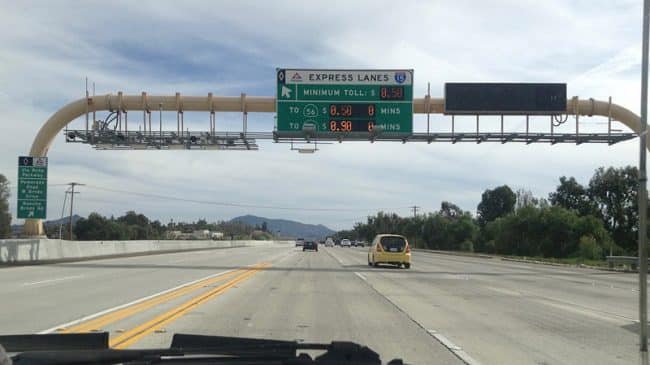Everyone is tired of gridlock. One way to develop a solution is to use basic economic principles. Economics informs us that all temporal goods have finite supply. Absent a demand-based solution, that supply will run out. One of the most straightforward means of allocating the supply of something is by charging for its direct use, and the more it is demanded, the higher the charge to bring supply and demand into equilibrium.
Congestion pricing is a means of forcing the demand to equal the supply when, at cost equal to zero, demand outstrips supply. This requires a toll for road users to insure that the quantity demanded isequal to the quantity supplied. Congestion pricing has been widely used by telephone and electric utilities to smooth out demand and to cover operating costs for less-peak periods.
The pricing of highways is politically challenging. Despite charging for other utilities, politicians have created all sorts of reasons why charging for roads is un-American. Imposing an additional charge for use of highways (or even some arterial streets) seems to be double taxation. Some view tolls as rigging the system against the working class. The equipment needed to administer congestion pricing–including tolling transponders, the transponder readers, and vehicle plate cameras–is not free. Some think it adds significantly to the cost of operating the facility. Some argue such a system is a threat to privacy. One newspaper reporter once told me that he worried such technology would catch him cheating on his wife. Others argue that it is unfair to impose a congestion charge in places with high-occupancy vehicle (HOV) lanes since the purpose of such lanes is to reward people who change their travel behaviour. Some argue that tolling does not solve congestion, which should be the only goal of transportation policymakers.
However, each of these concerns lacks merit. U.S. gas taxes are insufficient for maintaining and expanding our road network. While drivers have paid to build roadways, they have not paid to maintain them. Additionally, once the country has a system of congestion- priced roads, it may be technologically feasible for states to refund gas tax revenue.. The additional cost of toll technology is minimal. Presently, building toll-roads cost more than other roads because they are built to a higher engineering standard. But those higher up-front costs will actually save money in the long-term by decreasing overall maintenance costs.
The privacy argument is overblown because toll technology is collected in a one-way stream, blinding those collecting the tolls to the actual user data. Congestion pricing is not typically an addition to HOV lanes, but rather a replacement. Many facilities allow vehicles willing to pay a toll to access the lanes and vehicles with a certain number of occupants (typically 3 or more) access. Such lanes avoid the Goldilocks Principle of HOV lanes being too warm or too cool: (too many vehicles using a lane causes traffic speeds to slow, while too few vehicles means lanes are under used. The first scenario frustrates paying customers, while the latter infuriates customers in the congested non-priced lanes).
Congestion charges impact those who use roadways similar to any other use-based tax or fee. It reduces the externalities of congested roads and highways while directly transitioning the externality costs of driving to those people actually driving. Nobody likes to pay fees, but the most efficient mechanism imposes the cost on those using the resource.

